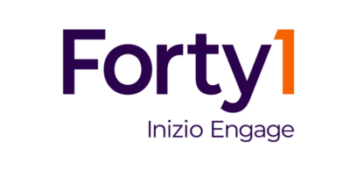Whichever way you look at it, the pandemic has made a lasting impact on the way we experience work. According to a McKinsey report, a majority of employees (52%) now want to work from home three days a week, would consider ‘jumping ship’ if those provisions aren’t part of the package (25%), and consider mental health a top priority in considering employment.
Happily, many employers have risen to the challenge, embracing more flexibility, placing more emphasis on diversity and inclusion, and dialing up efforts on health and wellbeing.
All of this means the ‘deal’ we make with our employers has fundamentally changed. When you combine this shift with the growing pressure to attract and retain the best talent, it’s fair to say your Employee Value Proposition (EVP) has never mattered more.
It’s also true the EVP has had a bit of a chequered past: the sort of initiative that has historically been launched with great fanfare… before being swiftly put back in the drawer to gather dust, box ticked.
But truth is, when used properly, it can be a powerful business tool. It can not only help you capture the imagination of candidates and employees alike, it can also help shape the entire employee experience in a way that creates lasting change in culture, engagement, and business performance.
There’s no magic formula for what makes a great EVP, but the good ones do share some common characteristics. They’re authentic – open about their culture and what work is really like. They’re connected, using their corporate brand’s strengths to add distinction to their proposition. They’re simple, with a single, unifying thought expressed in everyday language, not HR speak. They’re consistent, going beyond recruitment marketing to be the ‘red thread’ for the entire employee experience. They’re inclusive, never developed in isolation, but built using the voice of the existing employee. And they’re flexible: they know one size doesn’t fit all, so while grounded in a common truth, they’re flexible enough to connect with different audience needs, embracing a “fixed and flexible” approach that resonates with the shifting needs of their audience and capturing what a business needs from its people.
When you work for an organization there will be a common truth that really resonates: a shared sense of purpose, the pride your people have in your products and services, or in the social norms that shape the culture of the business. Whatever it is, you need to capture it and make it the iconic element of your EVP. It’s what will help you drive consistent messaging and stand out from the crowd. You should see it clearly in the communications and the experiences you create for your people – and hear it played back through the voice of the employee.
Alongside these fixed or iconic elements, there’s also the flexible elements of the offer. These are elements you can dial up or down to create the ’deal’ you make with your employees. It’s where you can outline the key skills, experiences and attributes you’re looking for. And it’s where you can create a tailored mix of benefits appealing to the needs of your audiences. For more junior roles, you may decide you want to dial up your approach to learning and development, whereas for more senior roles, L&D may be less appealing than the projects you can offer and the people they’ll work with that will resonate most.
However, communicating your EVP in a crowded market is tricky. Your audience has an ever-shortening attention spell, your competitors are trying to push the same buttons, and social media means you can quickly lose control of the narrative. So when it comes to “bringing the EVP to life”, here’s a few tips:
Don’t be shy:
To help you cut through the noise you’ll need a creative idea – the bigger and bolder the better. But it must have a clear line of sight to those iconic elements you’ve identified in your EVP, and amplified in a way that will resonate both rationally and emotionally with your audience (so make sure you test your idea for impact and authenticity with your people first).
Do think beyond attraction:
Your EVP isn’t just for recruitment marketing – it has to be a tool you can use to seamlessly bridge candidate attraction and talent retention. That’s why you’ll need to involve marketing, HR, internal communications and business leaders in its development, and ensure your creative concept and communications approach can work equally well for all your audiences.
Don’t just think social:
It can be tempting to think everyone gets all the information they need about whether to join or stay with your company from their social feed. However, to get the cut-through you want, you’ll need to think omni-channel. Map out all the different channels your candidates and employees use to interact with your business, and identify how you can best use each of them, so your audience can not only have a consistent brand experience, they can have it on their own terms.
Do remember your advocates:
Your employees can be the best ambassadors for your business and brand and therefore your best way to attract and retain the talent you need. This means you will need to work hard to ensure the EVP is authentic and meaningful to them, and then invest in a simple suite of tools and training to help them showcase your company through their own voice.
Don’t stop at communications:
Your EVP will not deliver the impact you want if you see it purely as a communications tool. Use it as a way to pressure-test the experiences you create. Take a key moment like onboarding and then put the current experience through an “EVP filter” to help you understand what parts of that experience are supporting your EVP – and what parts aren’t.
There has never been a more important time to think again about the EVP and the promise you make to your people and your candidates. Not only could it help you become a magnet for talent – if you embed it deeply within the employee experience it can drive that lasting change in engagement that could turbo-charge your business performance.
So, what are you waiting for?





